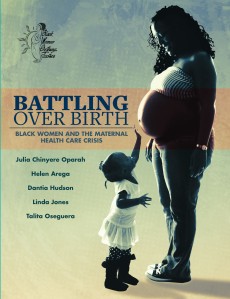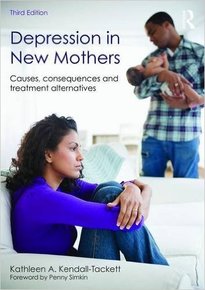Nancy Mohrbacher explains what the problem is likely to be and how to remedy it when mothers ask, “Why is my breast milk soapy?”
When mothers return to work and continue breastfeeding, finding that the milk they have expressed, stored, and frozen smells soapy or rancid can be soul-destroying.
Excerpt from Working and Breastfeeding Made Simple

Mothers store their expressed milk for many reasons. All of the mothers quoted here stored their milk in preparation for their return to work. But no matter what your situation, before amassing a huge reserve of frozen milk, as a precaution, it is a good idea to freeze several batches of your milk, thaw them after about a week, and then smell them.
Soapy-smelling milk
Some mothers make milk that has higher-than-average levels of the enzyme lipase, which over time breaks down fat in expressed milk (Mohrbacher, 2010). This fat breakdown can cause cooled or frozen milk to develop a soapy smell and taste. Depending on the level of lipase in your milk, this change in smell and/or taste may occur sooner or later. Freezing slows but does not stop lipase from digesting the milk fat.
Safe for babies. This soapy-tasting milk is safe for babies, and many babies will drink this milk without a problem (Lawrence & Lawrence, 2011). Megan B. from Illinois, USA, returned to work full time as a sales operations manager for a travel gear company when her son was three months old. She didn’t realize until later in lactation that her milk was high in lipase, because it didn’t affect her or her baby. “I didn’t really know [my milk] was high lipase until just recently. My son drank the milk fine. It just had a soapy smell.”
When it’s a problem. This becomes a serious issue, though, if the baby will not accept the soapy-tasting milk. Marissa S. from Pennsylvania, USA, describes an experience no mother wants to go through. “I remember crying when I had to throw away my freezer stash three days before returning to work. I was definitely not prepared for it!”
What you can do about it. The purpose of freezing a few batches for a week or more, and testing them for this soapy smell or taste is to avoid the need to discard a huge reserve of frozen milk. (Read on for other alternatives.) If your milk develops this soapy smell or taste and your baby accepts it, no problem. But if your baby doesn’t accept it, what’s next? Once your milk-fat is broken down, this process cannot be reversed.

If you find out in advance that high lipase levels may be an issue for you (mothers report their milk’s lipase levels can vary from baby to baby), one approach is to scald your milk before chilling or freezing it to deactivate the lipase and prevent this fat breakdown from occurring. Heating your milk is not routinely recommended, because it kills live cells in the milk. But if baby will not accept your pumped milk otherwise, this makes it possible for your milk to be used (Jones & Tully, 2011).
How should you scald your milk?
- Heat your milk in a pan on the stove until small bubbles form around the edges, but it is not yet at a full boil.
- Cool it quickly.
Jenn G., a full-time special-education teacher from South Carolina, USA, found herself in this situation.
Soon after giving birth, I started pumping, as I was going back to work when my daughter was 18 weeks old. After 14 weeks of pumping and feeding on demand, I had nearly 300 oz. (9000 mL) of breast milk stored. It was around this time that I offered my daughter a frozen bottle of milk. She refused it. I offered a second bottle, and she refused that. I smelled the milk, and it had a very soapy smell to it. I, of course, looked that up right away on Google and read about lipase. I thawed three more bags of milk, they all had that smell, and she refused them. So here I was about four weeks before returning to work with no useable milk, even though I had nearly 275 oz. (8250 mL) in my freezer.
I quickly learned that I would need to scald my milk. I took 5 oz. (150 mL) of freshly pumped milk and put in into five one-ounce bottles. I checked each bottle every five hours to see when my milk started to taste and smell bad. I found out that it was around hour 26. So I knew I could get through my entire school day without having to scald it at school. As soon as I got home each day, I began what my family affectionately called my science-fair experiment. I would scald all my milk. Then I would quickly put it all in glass bottles and cool it.
Not every mother with high milk lipase levels scalds her milk. Serena C. from Montana, USA, structured her day so that she could exclusively breastfeed without using frozen milk at all.
We found ways around it, including breastfeeding on my lunch break and then sending home the earlier pumped milk for later, as well as some reverse cycling [feeding mostly while mother is at home]. I ended up donating my whole freezer stash to a milk bank.
If this extra work concerns you, it may help to know how others have either fit scalding their milk into their busy lives or found ways to reduce the need.
Some mothers with high milk lipase levels scald their milk. Others find ways to avoid it.
When Michelle R. from Wisconsin, USA, a full-time teacher, discovered that her milk was high in lipase and her freezer reserve had gone “bad,” she did some online research and some experiments. She found that in her case it took three days for the change in smell and taste to occur and at first felt overwhelmed. “Didn’t I already have enough to deal with: working full time, pumping, and then being a mama the rest of the time?” But she soldiered on and discovered that she only needed to scald her milk once a week.
I developed a system where I used that day’s fresh milk for the next day’s daycare supply. On Friday, I would collect the milk and scald it in a pot, place the pot on ice just until it cooled, and finally pour it into storage bags. Come Sunday night, I would place those bags in the fridge to prepare for Monday at daycare. I felt very fortunate that I only had to do this on Fridays.
The previous mothers who shared their stories either donated their soapy-smelling milk to a milk bank or discarded it. But if you discover your milk has developed a soapy smell, before getting rid of it, know there may be ways to use it even after the fat breakdown has occurred.
Some mothers find that their baby will take soapy-smelling milk if it is mixed with fresh or refrigerated milk. If you decide to use some of this milk, what ratio of soapy milk to fresh milk will make it acceptable to your baby? This varies by lipase level and by baby. To find your best ratio of soapy-smelling milk to refrigerated milk, start with a half-and-half mixture. If baby accepts that, you may want to try two thirds to one third. Keep experimenting until you find the most soapy-tasting milk per container your baby will accept. That will allow you to use your freezer stash rather than pouring it down the drain.
Some sensitive babies even refuse milk that has been scalded. Marissa S., a full-time behavior specialist from Pennsylvania, USA, was extremely stressed when she found out three days before going back to work that her baby refused her stored milk. But by adding it to fresh milk, she found a way around it.
One thing I found out through trial and error was that if my pumped milk was fed within 24 hours, the fats did not break down too much and my daughter would still drink it. When I knew I would need to refrigerate or freeze my milk for more than a day, that night I would scald it before bed, and make sure to label everything clearly so that I could use the oldest first. I found my picky daughter really didn’t like the scalded milk much, so I would freeze them in one ounce stick forms to add an ounce or two to fresh bottles as needed, which she tolerated much better. I was the only person who did the scalding, as it is such a delicate process, and I didn’t want to put the stress on my husband. I knew I would’ve been upset if the milk was over-processed.
These mothers did the scalding themselves. But in some families, the mother’s partner could take on this task.
Sour or rancid-smelling milk

If you follow current milk-storage guidelines and it becomes sour or rancid-smelling within its recommended time frames, this change is probably unrelated to spoilage or milk-lipase levels. According to some food-storage experts, the most likely cause is chemical oxidation (Jones & Tully, 2011). One way to know if chemical oxidation is the cause is to scald some batches of your freshly pumped milk before freezing or cooling it. In this case, heating will speed this breakdown, making the smell worse instead of better.
If sour or rancid-smelling milk is an issue for you, you may be able to prevent this change by avoiding free copper or iron ions in your water and polyunsaturated fats in your diet.
Here are some specific changes that may help.
- Avoid drinking your local tap water; switch to bottled water for a while.
- Stop taking any fish-oil or flaxseed supplements.
- Avoid any foods like anchovies that contain rancid fats.
- Avoid using local tap water while handling your milk and its containers.
- Increase your intake of antioxidants by taking beta carotene and vitamin E supplements.
Expressing milk takes time and effort, and no mother wants her milk to be wasted. I hope knowing more about these possibilities will help you make the most of this precious resource.
References
Jones, F., & Tully, M. (2011). Best Practices for Expressing, Storing and Handling Human Milk (3rd ed.). Raleigh, NC: Human Milk Banking Association of North America.
Lawrence, R. A., & Lawrence, R. M. (2011). Breastfeeding: A Guide for the Medical Profession (7th ed.). Philadelphia, PA: Elsevier Mosby.
Mohrbacher, N. (2010). Breastfeeding Answers Made Simple. Amarillo, TX: Hale Publishing.
 Nancy Mohrbacher, IBCLC, FILCA, is the author of comprehensive breastfeeding books for professionals and parents and she speaks at events worldwide. She has been helping breastfeeding mothers since 1982. For 10 years, she ran a private lactation practice in Chicago, where she worked one-on-one with thousands of families.
Nancy Mohrbacher, IBCLC, FILCA, is the author of comprehensive breastfeeding books for professionals and parents and she speaks at events worldwide. She has been helping breastfeeding mothers since 1982. For 10 years, she ran a private lactation practice in Chicago, where she worked one-on-one with thousands of families.























Leave a comment